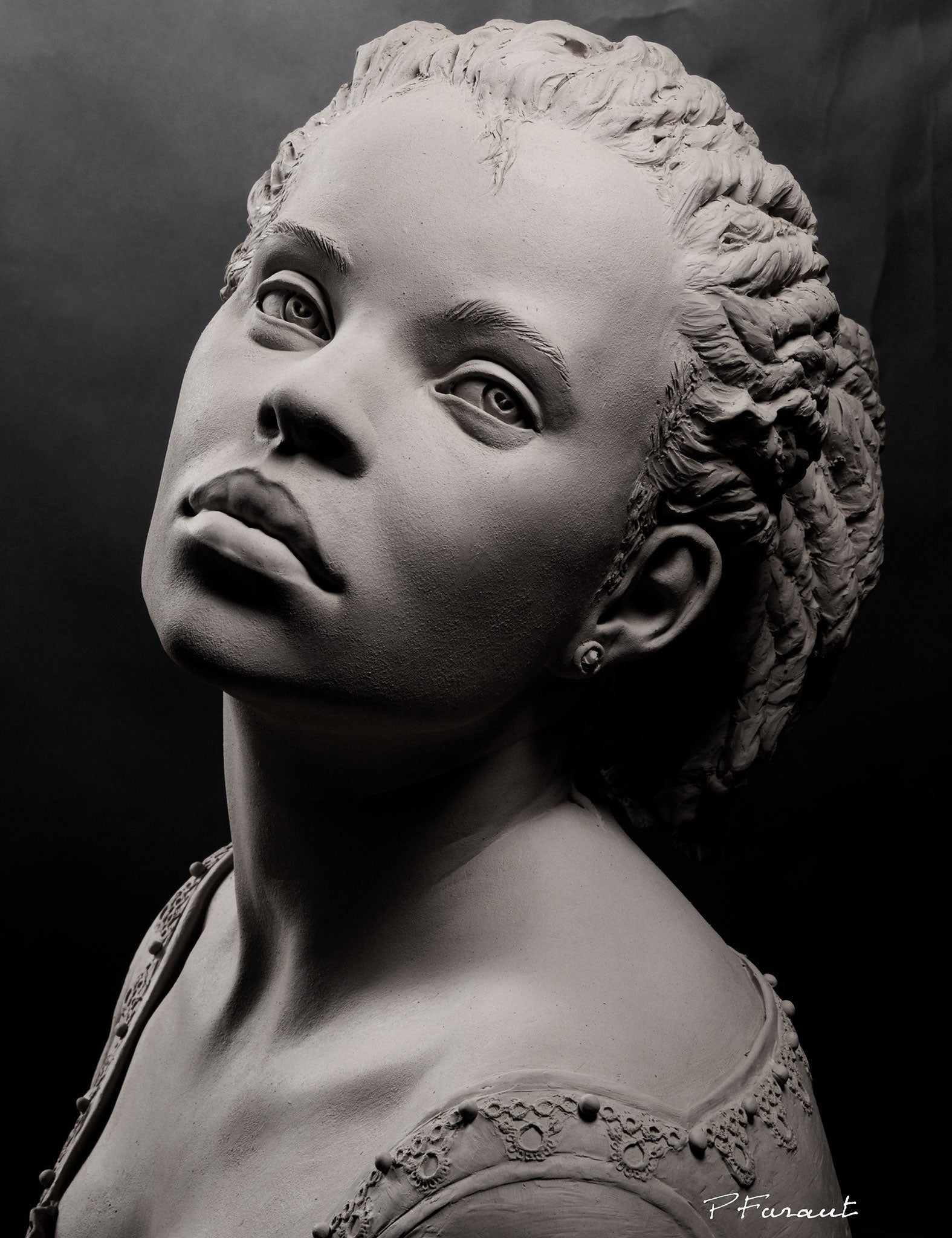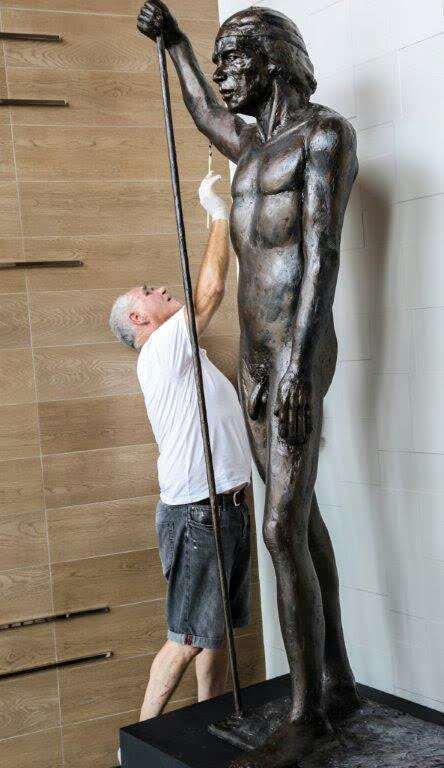Everlasting Beauty in Bronze: Revealing the Art of Bronze Sculptures
Wiki Article
Forming the Human Form: Portrayals of the Body in Sculpture
Sculpting the Human Kind: Portrayals of the Body in Sculpture is an extensive exploration of the creative depiction of the human body throughout background. This event explores the numerous methods, styles, and cultural perspectives that have actually shaped the means artists have actually portrayed the human kind in sculpture. From the elegant marble sculptures of old Greece to the detailed work of arts of the Renaissance, from the luxuriant and flamboyant Baroque and Rococo sculptures to the progressive and abstract expressions of modern-day and modern sculpture, this exhibition offers a captivating journey via the advancement of this timeless art kind - Robert C Hitchcock Sculptor. By analyzing the varied interpretations and representations of the human body, visitors will certainly obtain a much deeper understanding of the artistic, social, and social influences that have shaped our understanding of the human kind.Ancient Greek Sculptures

Among the defining characteristics of Old Greek sculptures is their focus on symmetry. Each part of the body is meticulously crafted to be in proportion to the whole, producing a sense of balance and consistency. The artists paid mindful focus to every information, from the positioning of muscular tissues to the positioning of limbs, making sure that each number appeared both elegant and effective.
The Greeks also valued the idea of idyllic charm. Instead than portraying the blemishes and imperfections of the human type, they looked for to produce an idyllic version of truth. The sculptures typically portrayed gods, athletes, and goddesses, with their bodies sculpted to excellence. Robert C Hitchcock Sculptor. This idealized portrayal of the human form not only renowned physical appeal yet additionally acted as a way of inspiring and boosting the customer.
Renaissance Masterpieces
Proceeding the expedition of the portrayal of the human type in sculpture, Renaissance masterpieces better improve the idyllic idea of beauty, building upon the harmonious and in proportion percentages of their Old Greek predecessors. Throughout the Renaissance period, which spanned from the 14th to the 17th century in Europe, musicians sought to revitalize the classic suitables of old Greece and Rome. They studied and copied the jobs of the old masters, pursuing a sensible depiction of the human body.
Among one of the most popular Renaissance sculptors was Michelangelo Buonarroti. His work of art, the sculpture of David, exemplifies the excellence and poise that became synonymous with Renaissance art. Standing at over 17 feet tall, the sculpture depicts the scriptural hero in a state of calmness prior to his battle with Goliath. David's muscle physique, captured with exceptional information, reveals the musician's proficiency of human composition.
One more significant Renaissance artist was Donatello. His sculpture of Saint George, produced in the early 15th century, showcases the artist's capacity to share toughness and nobility through the human form. The statue shows the epic dragon-slaying saint in a positioned and positive position, showing a feeling of heroism.
Renaissance work of arts not only celebrated the physical charm of the human body yet likewise conveyed deeper feelings and significances. With their meticulous attention to information and proficient craftsmanship, Renaissance artists elevated the art of sculpture to brand-new elevations, leaving a long-term heritage that remains to motivate artists to this particular day.
Baroque and Rococo Sculpture
Rococo and baroque sculpture exemplifies the elaborate and lavish portrayal of the human form during the 17th and 18th centuries. Artists such as Gian Lorenzo Bernini and Alessandro Algardi created sculptures that communicated movement, commonly illustrating numbers in significant postures.
Rococo sculpture, on the other hand, arised as a response to the grandiosity of the Baroque duration. It embraced a more fragile and spirited approach, concentrating on attractive information and detailed layouts. François Boucher and Jean-Baptiste Pigalle projected Rococo carvers that crafted works identified by their sophistication and beauty. They typically depicted numbers in graceful and sensual presents, showing the easy going and wayward nature of the Rococo style.
Both Baroque and Rococo sculpture positioned a terrific focus on the human form, celebrating its beauty and expressing a variety of emotions - Bronze Sculptures. Whether it was the powerful and dynamic figures of the Baroque or the stylish and enchanting figures of the Rococo, these sculptures recorded the essence of the human experience, leaving an enduring effect on the art world
Modern and Contemporary Sculpture
The evolution of shaping the human type proceeds in modern and modern sculpture. With the arrival of brand-new materials and techniques, musicians have pressed the boundaries of representation, challenging conventional notions of type and charm. Modern sculpture emerged in the late 19th century as a feedback to the altering political and social landscape. Musicians such as Auguste Rodin and Constantin Brancusi sought to capture the significance of the human kind, stressing feeling and movement. Rodin's "The Thinker" and Brancusi's "Bird precede" are renowned instances of this period.In the 20th century, the surge of abstraction and conceptual art brought brand-new opportunities for sculptors. Artists like Henry Moore and Barbara Hepworth checked out the partnership in between kind and room, developing abstracted and organic figures that tested conventional ideas of representation. Moore's significant bronze sculptures and Hepworth's carved rock works are celebrated for their innovative use materials and their capacity to stimulate a feeling of the human body in a non-literal means.
Contemporary sculpture remains to push the limits of representation and check out brand-new materials and strategies. Musicians like Antony Gormley and Ron Mueck create hyper-realistic sculptures that challenge our understanding of the human body, while others, such as Louise Bourgeois and Kiki Smith, use the body as an allegory for collective and personal experiences. The human type stays an effective subject in sculpture, offering a platform for musicians to explore identification, feeling, and the human condition.
Social Point Of Views on the Human Body

In the exploration of shaping the human form, the exam of social perspectives on the human body reveals a varied and rich tapestry of interpretations and representations. Throughout history, various cultures have held one-of-a-kind beliefs and values pertaining to the human body, causing unique imaginative expressions - Robert C Hitchcock Sculptor. These social perspectives shape the means the human body is portrayed and viewed in sculpture, mirroring societal standards, faiths, and aesthetic suitables
For circumstances, old Greek sculptures commemorated the idealized human form, stressing physical charm and athleticism. The sculptures represented gods, heroes, and professional athletes with completely proportioned bodies, personifying the Greek principle of physical excellence. On the other hand, old Egyptian sculptures concentrated on the conservation of the body in the afterlife, illustrating figures with stiff postures and idyllic features. The Egyptians thought that the body should exist in such a way that guaranteed its everlasting presence.
Likewise, cultural perspectives on the human body in African art usually highlight public identification and spiritual ideas (Portrait Sculptor). Sculptures from different African societies portray the body with overstated functions, signifying cultural worths and genealogical links. Aboriginal cultures in the Americas also have one-of-a-kind viewpoints on the body, usually portraying it in a spiritual context and highlighting the link in between human beings and nature
The exam of cultural perspectives on the body in sculpture enables us to obtain understanding into the worths, ideas, and aesthetics of various societies throughout history. It highlights the diversity of human experiences and the methods in which art reflects and shapes our understanding of the human type.

Verdict
In conclusion, the portrayal of the human body in sculpture has actually developed gradually, showing different imaginative movements and cultural perspectives. From the idyllic numbers of Ancient Greek sculptures to the practical and stirring Renaissance work of arts, and the detailed information of Baroque and Rococo sculptures, to the abstract and experimental types of modern and modern sculpture. The body has been a topic of attraction and imaginative expedition throughout history, showcasing the diverse analyses and expressions of the human type.Shaping the Human Kind: Representations of the Body in Sculpture is a thorough expedition of the artistic representation of the human body throughout history. From the elegant marble sculptures of old Greece to the detailed work of arts of the Renaissance, from the flamboyant and luxuriant Baroque and Rococo sculptures to the avant-garde and abstract expressions of modern and contemporary sculpture, this exhibition offers a fascinating trip via the evolution of this timeless art form. Artists like Antony Gormley and Ron Mueck create hyper-realistic sculptures that challenge our assumption of the human body, while others, such as Louise Bourgeois and Kiki Smith, Get More Info make use of the body as an allegory for individual and cumulative experiences. The human kind stays an effective topic in sculpture, giving a system for artists to discover identity, feeling, and the human condition.
From the idyllic figures of Old Greek sculptures to the realistic and stirring Renaissance work of arts, and the elaborate information of Baroque and Rococo sculptures, to the abstract and experimental kinds of modern and modern sculpture.
Report this wiki page